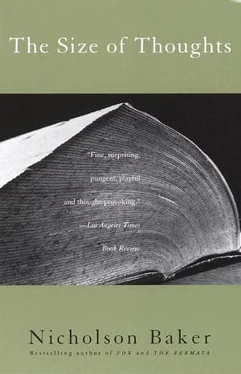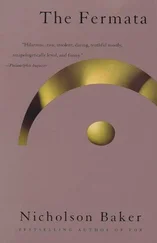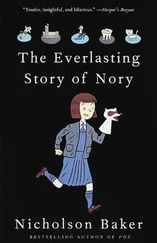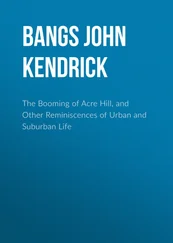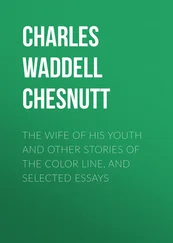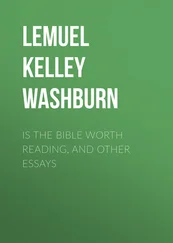Nicholson Baker - The Size of Thoughts - Essays and Other Lumber
Здесь есть возможность читать онлайн «Nicholson Baker - The Size of Thoughts - Essays and Other Lumber» весь текст электронной книги совершенно бесплатно (целиком полную версию без сокращений). В некоторых случаях можно слушать аудио, скачать через торрент в формате fb2 и присутствует краткое содержание. Год выпуска: 1997, Издательство: Vintage, Жанр: Публицистика, Критика, на английском языке. Описание произведения, (предисловие) а так же отзывы посетителей доступны на портале библиотеки ЛибКат.
- Название:The Size of Thoughts: Essays and Other Lumber
- Автор:
- Издательство:Vintage
- Жанр:
- Год:1997
- ISBN:нет данных
- Рейтинг книги:4 / 5. Голосов: 1
-
Избранное:Добавить в избранное
- Отзывы:
-
Ваша оценка:
- 80
- 1
- 2
- 3
- 4
- 5
The Size of Thoughts: Essays and Other Lumber: краткое содержание, описание и аннотация
Предлагаем к чтению аннотацию, описание, краткое содержание или предисловие (зависит от того, что написал сам автор книги «The Size of Thoughts: Essays and Other Lumber»). Если вы не нашли необходимую информацию о книге — напишите в комментариях, мы постараемся отыскать её.
The Size of Thoughts: Essays and Other Lumber — читать онлайн бесплатно полную книгу (весь текст) целиком
Ниже представлен текст книги, разбитый по страницам. Система сохранения места последней прочитанной страницы, позволяет с удобством читать онлайн бесплатно книгу «The Size of Thoughts: Essays and Other Lumber», без необходимости каждый раз заново искать на чём Вы остановились. Поставьте закладку, и сможете в любой момент перейти на страницу, на которой закончили чтение.
Интервал:
Закладка:
Under either conjectural prehistory of pastissage , we can speculate that Locke read Montaigne/Cotton’s “lumber pies of commonplaces” and wrote of men who make their understandings into “warehouses of other men’s lumber,” and of false knowledge as “a Collection of Lumber not reduc’d to Use or Order,” and then Samuel Johnson read Locke and wrote about those overlooked and neglected thoughts, lying among “other lumber of the memory.” At least, that’s one possible amateur genealogy. Then Ralph Waldo Emerson, reading Coleridge, Locke, Saint Augustine, and Johnson attentively, 11sensed he was in the presence of something very special in the way of recyclable truisms here; and, some twelve years following the appearance of Coleridge’s Biographia Literaria , in “The American Scholar” (1837), after giving an enthusiastic plug for the Romantic movement, and on his way to a denunciation of the “cold and pedantic” style of Pope, Johnson, and Gibbon, he worked his own preacherly numbers on the mind-lumber theme. “That, which had been negligently trodden under foot by those who were harnessing and provisioning themselves for long journeys into far countries, is suddenly found to be richer than all foreign parts,” he declaimed to the slack-jawed Phi Beta Kappans; and then:
let me see every trifle bristling with the polarity that ranges it instantly on an eternal law; and the shop, the plough, and the ledger referred to the like cause by which light undulates and poets sing;—and the world lies no longer a dull miscellaney and lumber-room, but has form and order; there is no trifle, there is no puzzle, but one design unites and animates the farthest pinnacle and the lowest trench.
Emerson was expressing, in fact, the nineteenth century’s constantly repeated desire — the wish to find unexpected for-eignness and beauty in the lumber at one’s feet. Wordsworth had set things in motion in 1800 by announcing (in the second edition of the Lyrical Ballads ) that he was imparting to incidents and situations from common life “a certain colouring of imagination, whereby ordinary things should be presented to the mind in an unusual aspect.” But everyone tried out the idea. Hazlitt gave it an entomological turn:
Let the naturalist, if he will, catch the glow-worm, carry it home with him in a box, and find it next morning nothing but a little grey worm; let the poet or the lover of poetry visit it at evening, when beneath the scented hawthorn and the crescent moon it has built itself a palace of emerald light. (
Lectures on the English Poets
, 1818.)
Shelley, in 1821, in his Defence of Poetry (published in 1840), gave it a haremy flavor: “Poetry lifts the veil from the hidden beauty of the world, and makes familiar objects be as if they were not familiar”; and later he says that it “strips the veil of familiarity from the world, and lays bare the naked and sleeping beauty.”
Edward Bulwer-Lytton used it to pit prose and poetry against each other:
Verse cannot contain the refining and subtle thoughts which a great prose writer embodies: the rhyme eternally cripples it; it properly deals with the common problems of human nature which are now hackneyed, and not with the nice and philosophising corollaries which may be drawn from them: thus: though it would seem at first a paradox, commonplace is more the element of poetry than of prose.
12
Leigh Hunt, essayist and teacher of Keats, in his The Seer; Or, Common-Places Refreshed (1840), wants to break open
the surfaces of habit and indifference, of objects that are supposed to contain nothing but so much brute matter, or common-place utility, and show what treasures they conceal. (“Pleasure.”)
And in a very Leigh Huntian essay called “A Christmas Tree” in the Christmas 1850 number of Household Words , Dickens himself, entranced by the sight of the tree, invokes (as I clumsily did some pages ago, before I ran across this page of Dickens) the Arabian Nights :
Oh, now all common things become uncommon and enchanted to me. All lamps are wonderful; all rings are talismans. Common flower-pots are full of treasure, with a little earth scattered on the top; trees are for Ali Baba to hide in; beef-steaks are to throw down into the Valley of Diamonds, that the precious stones may stick to them, and be carried by the eagles to their nests, whence the traders, with loud cries, will scare them.
13
In 1856, Coventry Patmore said it again in the Edinburgh Review : “The poet is doing his noblest work in resuscitating moral truths from the inert condition of truisms and conferring upon them a perennial bloom and power.…” John Stuart Mill gave the theme a try himself in his On Liberty (1859):
There is only too great a tendency in the best beliefs and practices to degenerate into the mechanical; and unless there were a succession of persons whose ever-recurring originality prevents the grounds of those beliefs and practices from becoming merely traditional, such dead matter would not resist the smallest shock from anything really alive, and there would be no reason why civilization should not die out, as in the Byzantine Empire. (
On Liberty
, Chapter III.)
Matthew Arnold, who once absurdly criticized Wordsworth for being under-read, 14weighs in, repetitive and humorless and uninspired as usual, 15in 1863: “The grand power of poetry,” he booms,
is its interpretative power; by which I mean, not a power of drawing out in black and white an explanation of the mystery of the universe, but the power of so dealing with things as to awaken in us a wonderfully full, new, and intimate sense of them, and of our relations with them.
Bulwer-Lytton gave the notion of the renovated commonplace a second try, this time in rhyme, in 1869:
Thou also, old picture of Paradise, well
In the cobwebb’ed lumber-chamber of Hell
Hast thou rested, rotted, and rusted:
Beelzebub’s masterpiece, painted
Long since, though the canvas be old,
And the hues of it tarnisht and fainted,
Yet retoucht with our purple and gold,
Thou shalt brighten, and glitter, and glow, for him,
With the colours of Eden ere they wax’d dim.
Come forth, and be furbisht and dusted!
(“Orval.”)
“Cobwebb’d lumber-chamber of Hell” is nicely torchlit; but better still is W. E. Henley’s sad wave at the past, “that wharf of aery lumber,” in his tribute, “My Meerschaum Pipe” (1875), which lifts the veil, or hanky, of custom from the sleeping beauty of that once commonplace appliance. This lyric (found in the English Poetry Database ) is fortunately short enough to quote in full, and it is a good example, too, of the congeners slumber, cumber , and lumber , which poets and prose writers have found useful in close proximity:
My Meerschaum Pipe is exquisitely dipped!
Shining, and silver-zoned, and amber-tipped,
In close chromatic passages that number
The tones of brown from cinnamon to umber,
Roll the rich harmonies of shank and crypt.
Couchant, and of its purple cushions clipped,
Its dusky loveliness I wake from slumber.
Was ever maid than thou more softly lipped,
My Meerschaum Pipe?
How many pangs herethro’ have lightly tripped
Into the past, that wharf of aery lumber?
How many plans, bright-armed and all equipt,
Out of this glowing brain have skyward skipped?
Memories that hallow, O regrets that cumber
My Meerschaum Pipe!
W. E. Henley, we may learn from Drabble’s Oxford Companion to English Literature , lost a foot early on to tubercular arthritis, and for this reason as well as his general piratical mien inspired the character of Long John Silver in Treasure Island (1883), which has in it just one lumber , a treasure handily unburied from the sandbanks of chapter 5 with the help of the Library of the Future CD-ROM:
Читать дальшеИнтервал:
Закладка:
Похожие книги на «The Size of Thoughts: Essays and Other Lumber»
Представляем Вашему вниманию похожие книги на «The Size of Thoughts: Essays and Other Lumber» списком для выбора. Мы отобрали схожую по названию и смыслу литературу в надежде предоставить читателям больше вариантов отыскать новые, интересные, ещё непрочитанные произведения.
Обсуждение, отзывы о книге «The Size of Thoughts: Essays and Other Lumber» и просто собственные мнения читателей. Оставьте ваши комментарии, напишите, что Вы думаете о произведении, его смысле или главных героях. Укажите что конкретно понравилось, а что нет, и почему Вы так считаете.
